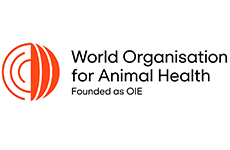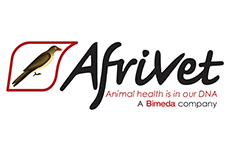- Infectious Diseases of Livestock
- Part 1
- Theileriosis of sheep and goats
- Vectors: Ticks
- Vectors: Tsetse flies
- Vectors: Muscidae
- Vectors: Tabanidae
- Vectors: Culicoides spp.
- Vectors: Mosquitoes
- Classification, epidemiology and control of arthropod-borne viruses
- Special factors affecting the control of livestock diseases in sub-Saharan Africa
- The control of infectious diseases of livestock: Making appropriate decisions in different epidemiological and socioeconomic conditions
- Infectious diseases of animals in sub-Saharan Africa: The wildlife⁄livestock interface
- Vaccination: An approach to the control of infectious diseases
- African animal trypanosomoses
- Dourine
- Trichomonosis
- Amoebic infections
- GENERAL INTRODUCTION: COCCIDIA
- Coccidiosis
- Cryptosporidiosis
- Toxoplasmosis
- Besnoitiosis
- Sarcocystosis
- Balantidiosis
- Leishmaniosis
- Neosporosis
- Equine protozoal myeloencephalitis
- GENERAL INTRODUCTION: BABESIOSES
- Bovine babesiosis
- Equine piroplasmosis
- Porcine babesiosis
- Ovine babesiosis
- GENERAL INTRODUCTION: THEILERIOSES OF CATTLE
- East Coast fever
- Corridor disease
- Zimbabwe theileriosis
- Turning sickness
- Theileria taurotragi infection
- Theileria mutans infection
- Theileria annulata theileriosis
- Theileriosis of sheep and goats
- Theileria buffeli⁄orientalis infection
- Non-pathogenic Theileria species in cattle
- GENERAL INTRODUCTION: RICKETTSIAL, CHLAMYDIAL AND HAEMOTROPIC MYCOPLASMAL DISEASES
- Heartwater
- Lesser known rickettsial infections in animals and humans
- Chlamydiosis
- Q fever
- Eperythrozoonosis
- Bovine Haemobartonellosis
- Potomac horse fever
- GENERAL INTRODUCTION: ANAPLASMOSES
- Bovine anaplasmosis
- Ovine and caprine anaplasmosis
Theileriosis of sheep and goats
Oriental Ovine Theileriosis: Aetiology & life cycle | Epidemiology | Clinical signs, pathogenesis & pathology | Diagnosis & differential diagnosis | Control
Benign Ovine Theileriosis: Aetiology & life cycle | Epidemiology | Clinical signs | Pathogenesis & pathology | Diagnosis & differential diagnosis | Control | References
This content is distributed under the following licence: Attribution-NonCommercial CC BY-NC  View Creative Commons Licence details here
View Creative Commons Licence details here

Theileriosis of sheep and goats
Previous Authors:
Current Authors:
J A LAWRENCE - Extraordinary Professor, DPhil, BSc, MRCVS (ret.), DTVM, Department of Paraclinical Veterinary Science, University of Zimbabwe, Harare, Zimbabwe
C BYARUHANGA - Post-doc Fellow, BVM, MVPM, PhD, Department of Veterinary Tropical Diseases, Para-clinical Building, Faculty of Veterinary Science, University of Pretoria, 100 Old Soutpan Road, Onderstepoort, Pretoria, Gauteng, 0110, South Africa
M OOSTHUIZEN - Parasitology, PhD, Department of Veterinary Tropical Diseases, Faculty of Veterinary Science, Private Bag X04, University of Pretoria, Pretoria, Gauteng, 0110, South Africa
B J MANS - Principal Researcher, BSc, BSc (Hons) Biochemistry, MSc (Biochemistry), PhD (Biochemistry), Agricultural Research Council, Onderstepoort Veterinary Research, 100 Old Soutpan Road, Pretoria, Gauteng, 0110, South Africa
Introduction
Theileria is a genus comprising tick-transmitted parasitic protozoa in the family Theileriidae, order Piroplasmida, subclass Piroplasmia, phylum Apicomplexa. It includes parasites previously allocated to the genera Cytauxzoon, Gonderia and Haematoxenus. The taxonomy of the genus at species level on morphological and biological characteristics in the past has been confused; taxonomy is now based on sequences of the 18S rRNA genes. Three Theileria species infecting small ruminants have been shown to be responsible for heavy mortality. Two of them, T. uilenbergi and T. luwenshuni were first described in China, whereas T. lestoquardi causes malignant theileriosis which is a major problem in Sudan and the Middle East. Other small ruminant Theileria species are considered as non-pathogenic; their importance lies in the confusion they may cause in diagnosis. The name T. recondita was given in the past to a non-pathogenic parasite in Europe transmitted by Haemaphysalis spp. but is regarded as invalid 8;the parasite was probably T. luwenshuni.
Table 1: Theileria species affecting sheep and goats
| Species | Disease | Natural Vector | Principal Hosts | Continental |
| Pathogenic | ||||
| Theileria lestoquardi | Malignant theileriosis | Hyalomma spp., | Sheep & goats | Africa, Asia |
| Theileria uilenbergi | Oriental ovine theileriosis | Haemaphysalis spp. | Sheep & goats, deer | Asia, Europe |
| Theileria luwenshuni | Oriental ovine theileriosis | Haemaphysalis spp. | Sheep & goats, gazelle, deer | Asia, Europe |
| Benign | ||||
| Theileria ovis | Hyalomma spp., | Sheep & goats, | Africa, Asia | |
| Theileria separata |
| Rhipicephalus spp., | Sheep & goats, antelope | Africa |
| Theileria sp. OT3 | Haemaphysalis spp. | Sheep, deer, Pyrenean chamois, | Asia, Europe | |
| Theileria sp. MK | Sheep & goats | Eurasia | ||
The life cycle of the Theileria species of sheep and goats is similar to that of the bovine Theileria species (See East Coast fever). The parasite is transmitted to its vertebrate host by the bite of an infected tick. Sporozoites injected into the host invade mononuclear leucocytes, either lymphocytes or macrophages, depending on the species, where they develop into schizonts. Some species have the ability to transform the host cell so that it can proliferate and disperse throughout the body, others do not. The schizonts release merozoites into the circulation, where they can be seen as piroplasms in erythrocytes. Ticks ingest the organisms when they feed. The organism undergoes multiplication and a sexual cycle in the tick gut and moves to the salivary gland where it is ready to start the next cycle. The organisms are transmitted from stage to stage of the tick, not transovarially from one tick generation to the next.
Malignant Ovine Theileriosis
Aetiology and life cycle
Theileria lestoquardi (T. hirci) is the best known causal organism of malignant theileriosis of small ruminants and has a life cycle and morphology typical of the genus Theileria. Theileria lestoquardi schizonts infect macrophages and B lymphocytes 14. The parasite infects both sheep and goats. Antigenically it is closely related to T. annulata of cattle31, and it is occasionally detected by PCR in this species 51.The parasiteis transmitted from stage to stage through the ticks Hyalomma anatolicum anatolicum, H. impeltatum, H. excavatum, H. scupense (H. detritum), Rhipicephalus sanguineus and R. turanicus, and through vertical transmission 14.
Schizont-infected cells can be grown readily in suspension culture, in a manner similar to those of T. parva and T. annulata (see East Coast fever and Theileria annulata theileriosis) 26 Cultured schizonts are of value in immunization and as antigen for indirect immunofluorescence testing.31
Epidemiology
Malignant theileriosis of sheep and goats caused by T. lestoquardi occurs in the Mediterranean basin, the Middle East, Sudan, western Asia and the Indian subcontinent 14, and infection has been identified in the absence of clinical disease in Tanzania 49 and southern Tunisia 46. The disease is widespread in some important sheep breeding areas and causes heavy losses in both indigenous and exotic breeds and their crosses, especially in Iran, Sudan and the Sultanate of...
To see the full item, register today:




